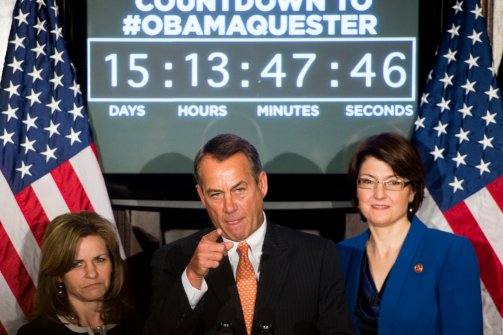The Sequester Cuts Are Anything But "Deep"

There’s a lot of media alarmism going on over automatic sequester cuts, a bi-partisan idea put forward by President Obama and embraced by Republicans, set to take place in April unless Congress intervenes. The New York Times describes them as “deep automatic spending cuts that will strike hard.” Locally, too, there is no shortage of hype. “Budget Cuts Could Affect Hundreds of ND Guard Employees,” is the headline from CBS affiliate KXMB.
But how much in spending cuts are we talking about, really? Not much, as this chart from Dan Mitchell demonstrates:

That we can’t even engage in relatively tiny, marginal spending reductions without having a sort of national coronary is central to our country’s fiscal problems. Propose tax hikes, and people freak out. Propose spending cuts, and people freak out. Which is why politicians have been giving us the “best” of both worlds, which is huge spending increases without the corresponding tax increases, resulting of course in huge budget deficits.
Truth be told, the biggest problem with the sequester cuts is that they target only discretionary spending. In fiscal year 2012, mandatory spending (including Social Security, Medicare, Medicaid and interest on the national debt) totaled $2.254 trillion:

Total federal revenues, from all tax sources, totaled $2.449 trillion:

Even if we had eliminated every single penny of discretionary spending in 2012, we’d only have about $195 billion left over.
The sequester is aimed at discretionary spending, and while there are plenty of areas in that category of spending where we could find savings, it completely ignores the real problem which is non-discretionary entitlement spending. Spending that’s about to get far, far worse as states (including North Dakota unless the legislature blocks it this week) implement the Medicaid expansion called for by Obamacare.







